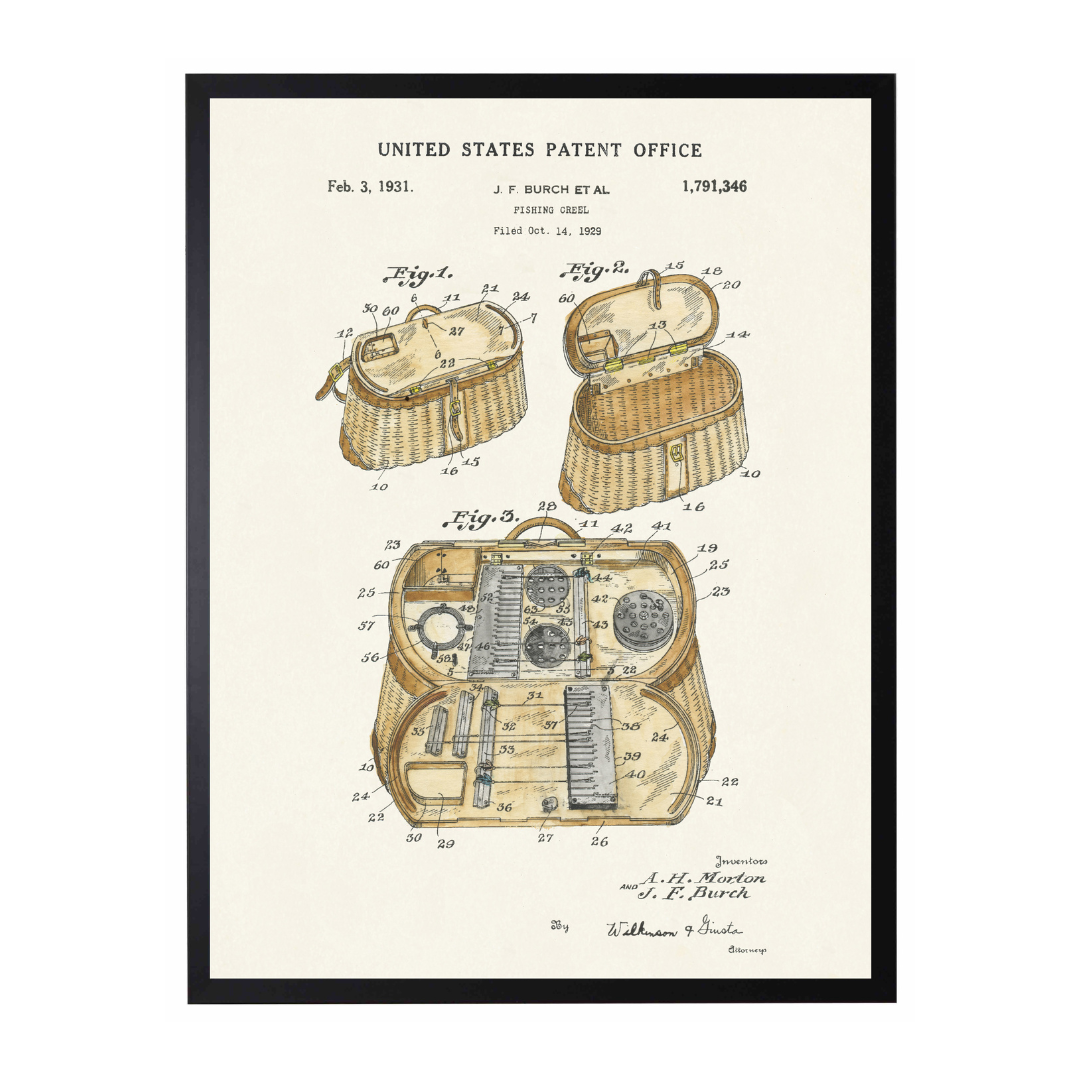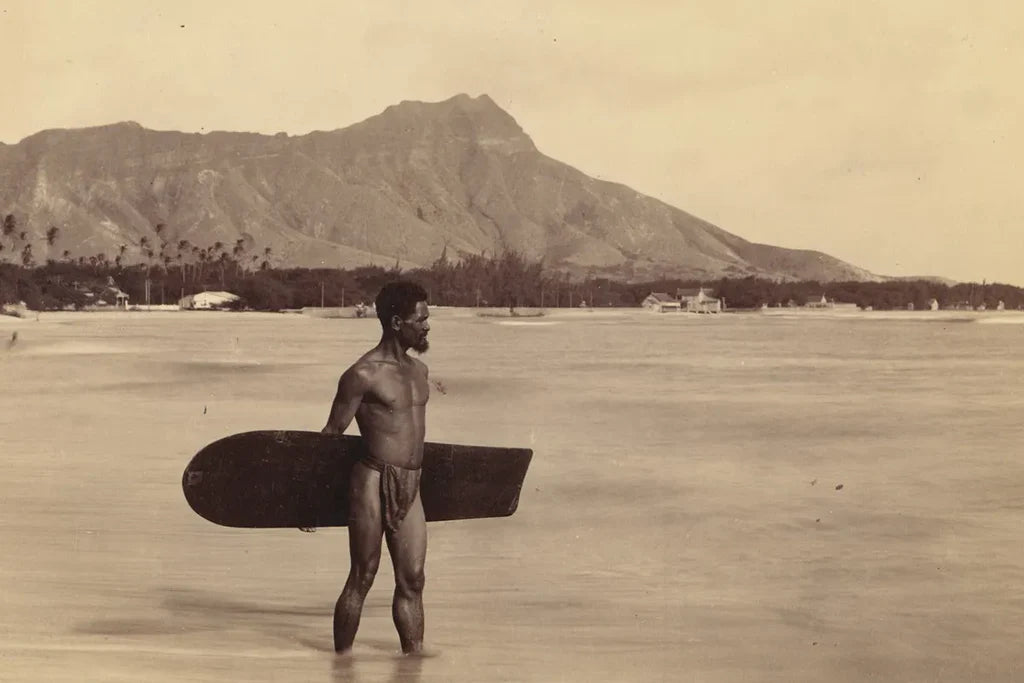A creel is a woven basket used to store and transport caught fish. Some fisherman added wet ferns or moss to the basket to preserve the fish. The word creel dates back to 1250 AD, over 770 years ago, and, presumably, fisherman had been using the device prior to it entering common vernacular.

Not much is known about the design or popularity of creels until the late 1800s when wicker and willow creels became very popular with US fisherman. Most creels were imported from Japan, China, and Korea and after light use, many fishermen realized they would need to reinforce the creels to extend their life.

This discovery led to a rise in trimming and reinforcing creels with leather. Oregon became the center of the leathered creel business and George Lawrence Co. was one of the most prominent companies.

Creel gradually fell out of favor once “catch and release” laws went into place to combat overfishing. While creel are rarely used today, they’ve become a popular collectable among devoted fisherman.
In 1929, John Burch and Arnold Morton of Billings, Montana filed a patent for a fishing creel. Their design included an organized compartment for storing fishing equipment and a convenient chute that made it possible to drop fish into the creel without opening the lid. This was Burch and Morton’s only granted patent.
Check out the patent




